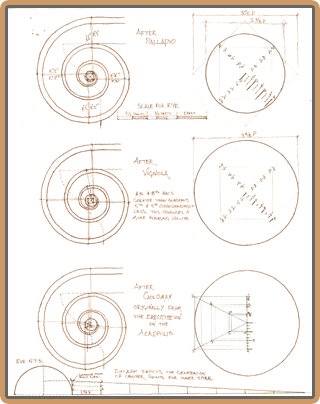Many bloggers who write from a distance have the audacity to judge a building based on pictures and news reports. Both Whispers and the American Papist are young catholics who seem to make gossip their hobby, and they are host to many comments calling the Cathedral hideous, and a monstrosity. Well, last Thursday I was a participant in one of the most beautiful liturgies I have ever been part of. It was an amazing event.
First of all, the building sings. The acoustics are wonderful andf the sound of singing in the place is worthy of any cathedral.
Secondly, the heart of any worship space is the people. No one who was there had a single word of complaint.
Yes, I am a bit more traditional. This might not have been what I would have built. But I believe this is a place for the ages, and future ages will judge it differently after it has had years of experience. Cathedrals are built over hundreds of years.
But for now, at the dawn of the 21st century, the Cathedral of Christ the light is the jewel of Oakland.
Respondeo:
To the first- It is true that I was unable to be present at the dedication Mass with Fr. Keyes et al., but I have actually been at the Cathedral, having visited it last weekend, so my comments are not misinformed by distant optics and a lack of physical evidence. Moreover, and as I shamlessly plugged in my previous post, I spent upwards of 16 hours a day for 11 months on a counter-proposal to this very Cathedral for my Master's thesis. It is quite possible that I know that Cathedral and that site in Oakland better than anyone with the exception of the project team at Skidmore Owings and Merrill. Architecture is my career, and I am in active practice designing several Catholic churches across the country. I am not a gossip mongerer (in this regard), without authority. Those things said, I will also concede that I'm not always right, but please consider my own arguments for why that building is not as great as you wish to think.
As to your experience with the liturgy, I am happy you report such beauty. The liturgy is the heart of the active Church. But here, we are critiquing the building housing Our Lord, and giving place for that liturgy. Truly, members of Karol Wojtyla's 'środowisko' youth group have claimed their most inspiring liturgies came under the Polish mountain air when on kayak trips with their future pontiff, but that does not mean that the Polish mountainside is per se an acceptable church merely because beautiful liturgies were said there. The Rite of Dedication of a Church and Altar is an absolutely beautiful liturgy, and one which most people--even priests-- don't get to witness because of the infrequency of dedicating new churches. Perhaps some of the beauty you took in was influenced by the breathtaking grandeur of the Rite rather than the breathtaking grandeur of the site?
To the second- It just might sing. Not having had the chance to hear a choir in action, I cannot lay claim to the ineffectualness of the building as an arena for Sacred Music. In fact, I'd bet my bottom dollar it's acoustically charged...it is a relatively simple geometry with thousands of regular acoustic dampeners, and with that pricetag I'm sure at least $2-3 Million was spent on acoustic models and testing-the same as any opera hall. But this only satisfies its requisite acoustical qualities...and represents a personal experience only...i.e. what the music sounds like to the individual listener. This is a good quality to be certain in any church, modern or traditional, but the personal edification of the ears of a parishioner is not the raison d'être of a church.
To the third- I cannot speak to the personal opinion of those present at the dedication Mass. BUT, I'd bet on two things: First, even I, who am a most vocal opponent of modernist architecture, especially modernist ecclesiastical architecture, can recognize when to keep my mouth shut. In deference to the good Bishop Vigneron's trials and tribulations with this church, I would never have badmouthed the building on the day of its dedication, and I suppose those at the Cathedral for it's dedication would not do so either, if for no other reason than out of respect for the Bishop. Second, who gets invited to dedications? Donors and priests. Are the donors going to criticize the design they paid for? Of course not. Are the priests? Reread the previous sentence above.
To the fourth-Here is the view of the Cathedral from across Lake Merritt that I snapped last week. As you look at this and the following image, please keep this quote in mind from the Rite of Dedication of a Church and Altar:
"Because the church is a visible building, it stands as a special sign of the pilgrim Church on earth and reflects the Church dwelling in heaven."
 And here is my counterproposal from the same vantage point:
And here is my counterproposal from the same vantage point: Which of these is a 'visible sign'? Can you even locate a visible cross or any other sign at all that tells the viewer that the Cathedral as built is even a Church? How do each stand as a 'special sign of the pilgrim Church', or 'reflect the Church dwelling in heaven'? I shudder to think of downtown Oakland as a reflection of the heavenly Church.
Which of these is a 'visible sign'? Can you even locate a visible cross or any other sign at all that tells the viewer that the Cathedral as built is even a Church? How do each stand as a 'special sign of the pilgrim Church', or 'reflect the Church dwelling in heaven'? I shudder to think of downtown Oakland as a reflection of the heavenly Church.Future ages will not see what is currently there, in part because it will only last around 60 years. Modernist architecture is not built to last longer because ideologically modernist architects think it morally abhorrent to impose their own zeitgeist on the future, in the same way they do not wish to impose past ages on the present, and so they habitually specify details that are untried and untested. So they fail, and the planned obsolescence of the building takes shape. And I'm sorry to say, but glass façades have a funny way with dealing with 'experience': the older they get, the worse they look. This building is only going downhill from here.
But if a church is built for the ages via a tradition that transcends time and place, then a particular building of this or that time and place can be appropriate beyond itself. Traditional buildings take on a patina with age that actually enhances their beauty. They only look better with age.
To the fifth- "The Cathedral of Christ the light is the jewel of Oakland." The jewel of Oakland? I'm so sad to say this, but you are absolutely right. So unfortunate.
"The very nature of a church demands that it be suited to sacred celebrations, dignified, evincing a noble beauty, not mere costly display, and it should stand as a sign and symbol of heavenly realities."The real question here is whether the Cathedral satisfies these qualities, and is an appropriate resting place for the Body of Our Lord. From the outside it is not. And we can do better. We can build right. We can build traditional. We can honor Our Lord with a Domus Dei. We must only have the will to do it, and then we can build functional, durable, and beautiful churches.--Dedication of a Church and Altar II.1.iii
Tomorrow we'll take a tour of the interior, and seek redeeming qualities.
UPDATE: HERE ARE THE FOLLOW-UP AND RELATED ARTICLES:
Cathedral of Christ the Blight (written prior to visiting the Cathedral)
There is No Prayer There (commentary on the exterior of the Cathedral)
Raiders of the Lost Art (commentary on the interior of the Cathedral and its art)
Missing the Middle (or Central) Term (commentary on the placement of the Tabernacle in the Cathedral)



4 comments:
Duck, I'm enjoying this discussion, especially in light of your unusual expertise regarding this building. I don't really have anything intelligent to contribute, but I wanted you to know you have a reader!
I'll confine my point to addressing your comment on Fr Keyes' point two.
I'd be pretty sure if he says "the building sings," he's talking about the people at worship, not the choir. You can't focus acoustical control and expect the folks in the pews to sing. Natural materials, good shape, and minimal electronic reinforcement: that's the best.
I addressed your misdiagnosis on the state of American sacred architecture on the IC site. We have far more to worry about from pragmatics who want to build on the cheap.
Todd
And pray tell, Todd, what is the IC site? I'm not an architect, so I wouldn't know.
God is deserving of our best, and clearly more could have been done. From a visual standpoint at least the people in LA are not alone...
Post a Comment